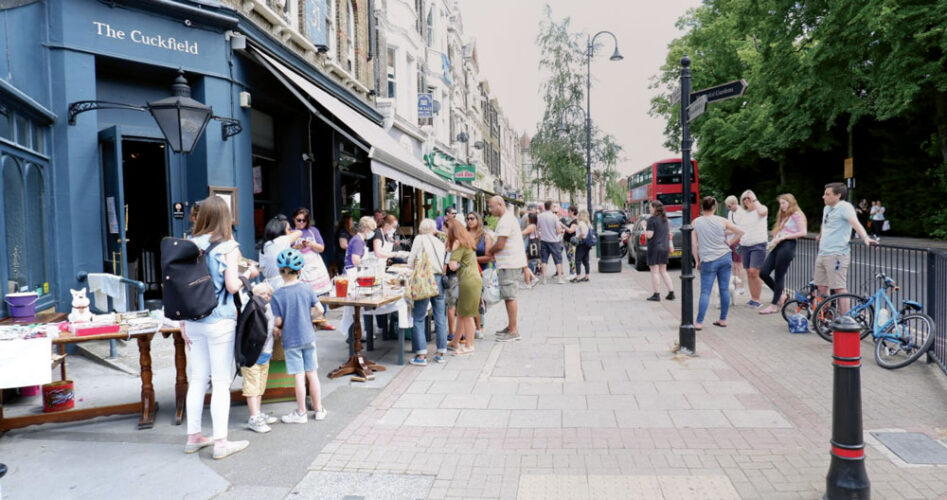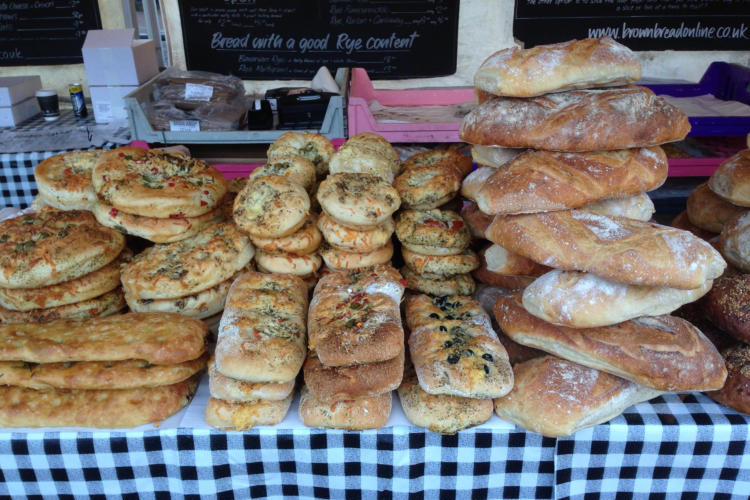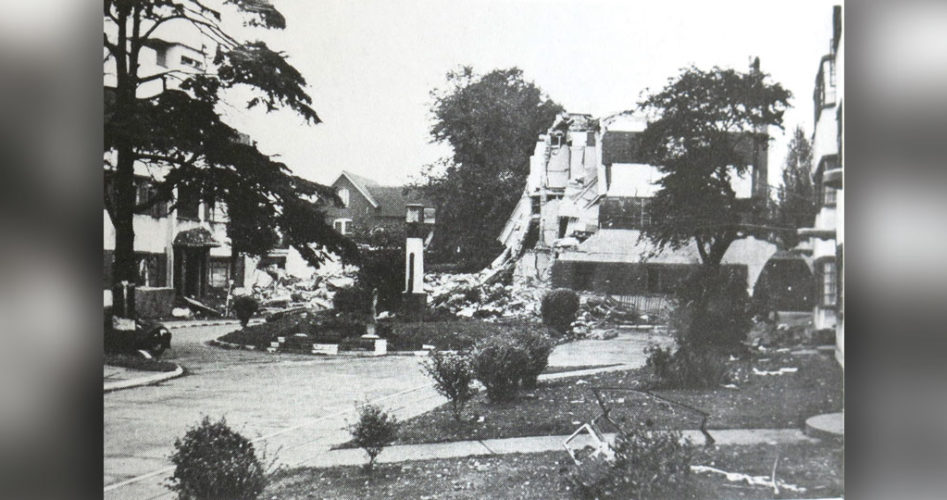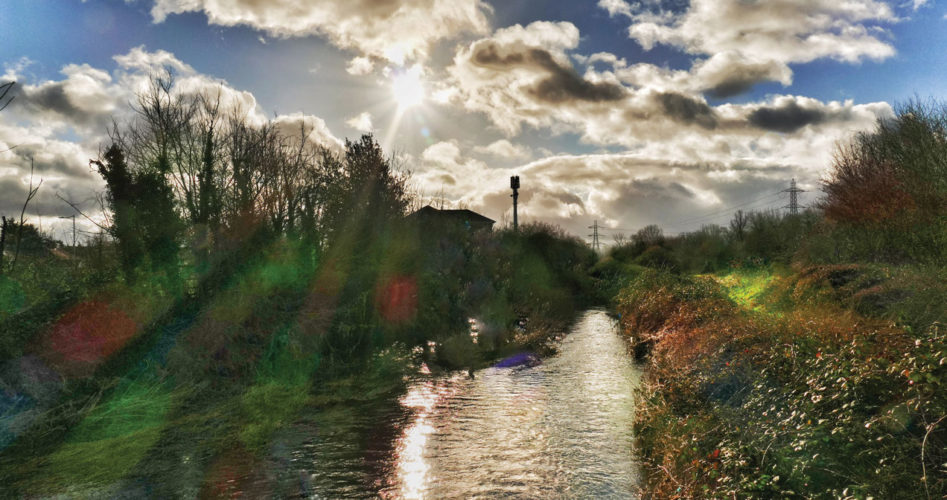No one can fail to have noticed something happening on the traffic island between The George pub and Wanstead Station. The strings of bunting make it look a bit like a village fete. Hardly likely! This is the final stage of a project Wanstead Community Gardeners have had in mind for some time.
Three years ago, we took over the wider empty part of this patch with the idea of planting wild flowers there. We had a degree of success, but problems with couch grass and ivy threatened to overwhelm the area. Also, the concrete-like soil didn’t help. Last year, our councillors advised us to apply for a council grant for help with this difficult patch. We were successful but there were complications.
The real game changer came when the council cut down the shrubs which filled the long neck of the traffic island down to the traffic lights as they had become a drivers’ sight line issue. Suddenly, we realised we could use the whole bed, a much larger area. We wanted to create a flower meadow there but conditions are tough. No possibility of watering and long dry spells. Time was ticking on for seed sowing. Finally, we managed the weed eradication programme and the necessary lapse of time, but we had some serious work to do before seeds could be sown.
With the coronavirus, the traffic on the dual carriageway was minimised and there were lots of people with time on their hands. People gave what time they had. Keeping a cow distance apart, they dug out the shrub roots and removed decades worth of rubbish trapped in the shrubs (every spadeful of earth brought up more bits of plastic, silver paper and cellophane). The concrete soil was pickaxed to loosen it and all was raked smooth. What a project! What a lot of hard work!
We had our sights firmly fixed on the date for the next real rain. Our seeds would need that to germinate. On 27 April, the deed was done. A very tough mix of seeds sown and footed in. That night, and for the next two days, it poured with rain. The answer to our prayers. There has been little rain since then but the seedlings are growing and the first ones are flowering: Californian desert bluebell. With a name like that, it has to be tough. Watch this space!














